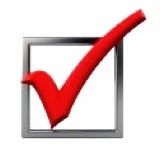Title Page
-
Fire Risk Assessment
-
UPRN
-
Location
-
Property risk category
-
Conducted on
-
Fire risk assessor
-
Suggested review date
Header
-
Add location
-
Add media
-
Property Category
-
Management extent?
-
Number of floors
-
Number of flats
-
Extent of common area accessed
-
Common areas which could not be accessed
-
Building description inc. No of stories/stairwells No of entrances/exits Lifts Stepped/level access Ancillary usage
-
Person managing fire safety in premises
-
Person(s) consulted during fire risk assessment
-
No. Of occupants
-
No. Of employees
-
Identify any persons at significant risk
-
Identify any members of the public on site (Maximum estimated)
-
Recommended evacuation strategy for the building
Elimination/Reduction of Fire Hazards
Electrical Ignition Sources
-
A1 Is fixed installation periodically inspected and tested?
-
A2 Is PAT testing in common areas carried out (Annually)?
-
A3 Is there a policy for personal electrical appliances?
-
A4 Is the use of adaptors and leads limited?
Smoking Policies
-
B1 Are there suitable arrangements for those who wish to smoke?
-
B2 Does the policy in relation to smoking appear to be observed
Arson
-
C1 Are premises secured against arson by outsiders? (Please state how)
-
C2 Are bins secured / stored in a suitable location?
-
C3 Is fire load close to the premises limited?
Portable Heaters and Heating Installations
-
D1 If used, is the use of portable heaters regarded as safe?
-
D2 Are fixed heating systems maintained (Annually)?
Cooking
-
E1 Are reasonable measures in place to prevent fires as a result of cooking?
-
E2 Are filters changed and ductwork cleaned?
-
E3 Are suitable extinguishing appliances available?
Lightning
-
F1 Does the property have a lightning protection system?
House-Keeping
-
G1 Is the property regularly cleaned to prevent the build up of combustibles?
-
G2 Combustible materials not kept close to sources of ignition?
-
G3 Escape routes kept clear of items, combustible materials or waste?
-
G4 Escape routes kept clear of any trip hazards?
-
G5 Any hazardous materials stored correctly?
-
G6 Are all other house-keeping issues satisfactory?
Hazards Introduced by Outside Contractors
-
H1 Are fire safety conditions imposed on outside contractors?
-
H2 Is there satisfactory control over works carried out in the building by outside contractors (E.g hot work permits)?
-
H3 Is there satisfactory control over works carried out in the building by in-house contractors? (E.g hot works permits)
Dangerous Substances
-
I1 If dangerous substances are used, has a risk assessment been carried out as required by the Dangerous Substances and Explosive Atmospheres Regulations 2002?
Other Significant Hazards
-
J1 Are all issues deemed satisfactory?
General Fire Protection Measures
Means of escape
-
K1 Is escape route design deemed satisfactory?
-
K2 Are the escape routes adequately protected?
-
K3 Is there adequate provision of exits for the numbers who may be present
-
K4 Is there adequate exit width, for the numbers who may be present?
-
K5 Are doors on escape routes easily opened?
-
K6 Do final exits open in the direction of escape where necessary?
-
K7 Are travel distances satisfactory?
-
K8 Are there suitable precautions for all inner rooms?
-
K9 Are escape routes separated where appropriate?
-
K10 Are corridors sub-divided where appropriate?
-
K11 Do escape routes lead to a place of safety?
-
K12 Are the stairs and/or lobbies provided with adequate ventilation?
-
K13 Are there suitable arrangements in the building for means of escape for disabled persons?
-
K14 Are all other means of escape issues satisfactory?
Flat Entrance Doors
-
L1 Are flat entrance doors/ frames appropriately fire rated?
-
L2 Are fire rated flat entrance doors in good condition - Not in need of repair?
-
L3 Is all glazing to flat entrance doors appropriately fire rated?
-
L4 Are fan lights above flat entrance doors appropriately fire rated?
-
L5 Are side panels to flat entrance doors fitted with adequate self-closing devices
-
L6 Are flat entrance doors fitted with adequate self-closing devices?
-
L7 Are flat entrance doors fitted with intumescent strips and cold smoke seals?
-
L8 Are letterboxes satisfactory?
-
L9 Are all other flat entrance door issues satisfactory?
-
M1 Are all common area fire doors and/or frames appropriately fire rated?
-
M2 Are all common area fire rated doors in good condition - And not in need of repair?
-
M3 Is all glazing to common area fire doors appropriately fire rated?
-
M4 Are fan lights/side panels to common area fire doors appropriately fire rated?
-
M5 Are self-closing devices on common area fire doors adequate? (Where appropriate)
-
M6 Are intumescent strips and smoke seals provided to common area fire doors?
-
M7 Are common area fire doors adequate otherwise?
-
M8 Are all other fire door issues satisfactory?
Emergency Lighting
-
N1 If emergency lighting is provided, is it in good working order?
-
N2 if emergency lighting is provided, is coverage sufficient? (Internal and external)
-
N3 If emergency lighting is not provided, is borrowed/artificial lighting sufficient for escape (Internal and external)
Fire Safety Signs and Notices
-
O1 Is there adequate provision of fire safety signs and notices? (Consider directional, exits, stairs, fire action notices and "Do not use lift" signs)
-
O2 Is fire door signage adequate? (Consider "Fire door keep shut" and "Fire door keep locked shut" signs)
-
O3 Are signs clearly visible?
Means of Giving Warning in Case of Fire
-
P1 Has the building got a manually operated electrical fire alarm system?
-
P2 If common area AFD and/or alarm system installed, is it in good working order?
-
P3 If installed, is the common area AFD adequate for the occupancy and fire risk?
-
P4 If not installed, are the premises deemed safe without a common are AFD system?
-
P5 If applicable, is separate domestic hard-wired smoke/heat alarm within the flats installed to a suitable standard?
-
P6 Are all other AFD and alarm systems satisfactory?
Limiting Fire Spread
-
Q1 Is the level of compartmentation adequate? (Special consideration should be given to converted or non "Purpose built" premises)
-
Q2 Are hidden voids appropriately enclosed and/or fire stopped?
-
Q3 Are risers (Shafts,ducts and cupboards) in the common area appropriately enclosed and/or fire-stopped?
-
Q4 Is compartmentation maintained in the roof space?
-
Q5 Are electrics enclosed in fire rated construction? (Where necessary)
-
Q6 Is compartmentation maintained at electrical meter cupboards in flat walls?
-
Q7 If required, are dampers provided? (Base of refuse chute, ductwork etc)
-
Q8 Are wall and ceiling linings appropriate to limit fire spread?
-
Q9 Are soft furnishings in common areas appropriate to limit fire spread/growth?
-
Q10 Are all other fire spread/compartmentation issues satisfactory?
Fire Extinguishing Appliances
-
R1 If required, is there reasonable provision of portable fire extinguishers?
-
R2 Are all fire extinguishing appliances readily accessible?
Other relevant systems and equipment
-
S1 If any other relevant systems/equipment is installed, state type of system and comment as necessary
Fire Safety Management
Procedures and Arrangements
-
T1 Has a competent person been appointed to assist in undertaking the preventative and protective measures?
-
T2 Is there a suitable record of the fire safety arrangements?
-
T3 Are there appropriate procedures in place in the event of fire and are these documented?
-
T4 Are there suitable arrangements for calling the Fire Service, meeting them on arrival and providing relevant information?
-
T5 Are there suitable fire assembly points away from any risk?
-
T6 Are there adequate procedures in place for the evacuation of disabled people who are likely to be present?
-
T7 Are staff nominated and trained on the use of fire extinguishing appliances?
-
T8 Are staff nominated and trained to assist in evacuation
-
T9 Is there appropriate liaison with the local Fire and Rescue Service?
-
T10 Are routine in-house checks carried out? (Including control and indicating equipment normal, extinguishers in place and working, lighting working, fire doors - Frames/seals/closing, fastenings, final escape routes clear)
-
T11 Are all other fire safety management issues satisfactory?
Training and Drills
-
U1 Do staff receive adequate induction and annual refresher fire safety training? (To include fire risks in the premises, fire safety measures in the building m, action in the event of fire and hearing the alarm, location and use of fire extinguishers, calling the fire service)
-
U2 Are employees nominated to assist in the event of fire given additional training?
-
U3 Are staff nominated and trained to use fire extinguishing appliances?
-
U4 Are fire drills carried out at regular intervals?
Testing and Maintenance
-
V1 Is the fire alarm system tested weekly and periodically serviced?
-
V2 Is the emergency lighting system tested monthly and annually?
-
V3 Are fire extinguishers serviced annually?
-
V4 Are rising mains inspected six-monthly and tested annually?
-
V5 Is the lightning protection system annually inspected and tested?
-
V6 Are all other systems services? (Consider fire-fighting lifts, sprinkler systems)
Records
-
W1 Is there a log book on the premises?
-
W2 Are fire drills recorded?
-
W3 Is fire training recorded?
-
W4 Are fire alarm tests recorded?
-
W5 Are emergency lighting tests recorded?
-
W6 Is testing/maintenance of any other fire protection systems?
Any Other Information
-
X1 Are all issues deemed satisfactory?
Risk Ratings
-
Likelihood of fire
-
Potential consequences of fire
Asset Register
-
Z1 Is there emergency lighting installed at the premises?
-
Z2 Is there common area fire alarm detection and/ or alarm (Or AOV) in the building? Give details of coverage
-
Z3 Are there any fire extinguishers in the building?
-
Z4 Are there any fire blankets in the building?
-
Z5 Is there a sprinkler system in the building?
-
Is there a wet or dry riser in the building?












